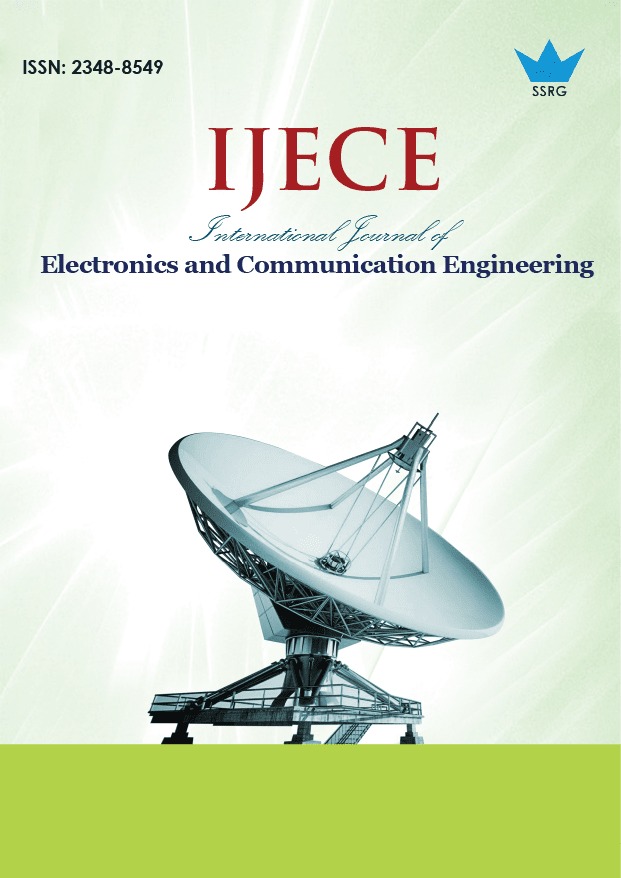Evaluating the Suitability of Wavelet Transform in Matlab for Application in Wearable Health Monitors

| International Journal of Electronics and Communication Engineering |
| © 2025 by SSRG - IJECE Journal |
| Volume 12 Issue 5 |
| Year of Publication : 2025 |
| Authors : Roger Chaupi Arohuillca, Dylan Contreras Llica, Jesús Talavera S |
How to Cite?
Roger Chaupi Arohuillca, Dylan Contreras Llica, Jesús Talavera S, "Evaluating the Suitability of Wavelet Transform in Matlab for Application in Wearable Health Monitors," SSRG International Journal of Electronics and Communication Engineering, vol. 12, no. 5, pp. 1-7, 2025. Crossref, https://doi.org/10.14445/23488549/IJECE-V12I5P101
Abstract:
The incidence of neuromuscular disorders, including myopathy and Amyotrophic Lateral Sclerosis (ALS), has sharply risen in areas such as Arequipa, Peru. However, the lack of access to specialized diagnostic mechanisms has made diagnosis perfection impossible, primarily among underdeveloped areas. This study thereby provides the framework for developing and testing an EMG signal analysis system based on machine learning and wavelet transform to enhance diagnosis in wearables. The dataset is from the Nikolic PhD thesis, undertaking EMG recordings from healthy, myopathy, and ALS groups. This offers a strong basis for the discrimination between normal and pathological muscle activity. The EMG signals from the brachial biceps and medial vastus muscles were collected, preprocessed for denoising and artifact removal, and were analyzed using wavelet transform to decompose the EMG signal into its relevant frequency components. Features extracted from wavelet decomposition were then applied to train a Support Vector Machines (SVM) classifier for further differentiation between the three groups. The SVM classifier performed with a degree of accuracy, sensitivity, and specificity (92%, 90% and 94% ) that suggests this approach could help greatly in the early diagnosis and improved healthcare access for those facing neuromuscular disorders, especially in regions lacking healthcare access.
Keywords:
EMG, Wavelet transform, Wearable application, Neuromuscular disorders, SVM.
References:
[1] Alan E.H Emery, “The Muscular Dystrophies,” The Lancet, vol. 359, no. 9307, pp. 687-695, 2022.
[CrossRef] [Google Scholar] [Publisher Link]
[2] Jun Kimura, Electrodiagnosis in Diseases of Nerve and Muscle: Principles and Practice, Oxford University Press, 2013.
[CrossRef] [Google Scholar] [Publisher Link]
[3] Faris Almubaslat, Sofia S. Sanchez-Boluarte, and Monica M. Diaz, “A Review of Neurological Health Disparities in Peru,” Frontiers in Public Health, vol. 11, pp. 1-16, 2023.
[CrossRef] [Google Scholar] [Publisher Link]
[4] Angkoon Phinyomark, Rami N. Khushaba, and Erik Scheme, “Feature Extraction and Selection for Myoelectric Control Based on Wearable EMG Sensors,” Sensors, vol. 18, no. 5, pp. 1-17, 2018.
[CrossRef] [Google Scholar] [Publisher Link]
[5] Paolo Bonato, “Wearable Sensors and Systems,” IEEE Engineering in Medicine and Biology Magazine, vol. 29, no. 3, pp. 25-36, 2010.
[CrossRef] [Google Scholar] [Publisher Link]
[6] A. Phinyomark, C. Limsakul, and P. Phukpattaranont, “Application of Wavelet Analysis in EMG Feature Extraction for Pattern Classification,” Measurement Science Review, vol. 11, no. 2, pp. 45-52, 2011.
[CrossRef] [Google Scholar] [Publisher Link]
[7] V. Kartsch et al., “Smart Wearable Wristband for EMG based Gesture Recognition Powered by Solar Energy Harvester,” 2018 IEEE International Symposium on Circuits and Systems (ISCAS), Florence, Italy, pp. 1-5, 2018.
[CrossRef] [Google Scholar] [Publisher Link]
[8] Suman Kanti Chowdhury, and Ashish D. Nimbarte, “Comparison of Fourier and Wavelet Analysis for Fatigue Assessment during Repetitive Dynamic Exertion,” Journal of Electromyography and Kinesiology, vol. 25, no. 2, pp. 205-213, 2015.
[CrossRef] [Google Scholar] [Publisher Link]
[9] Abdulhamit Subasi, “Classification of EMG Signals using PSO Optimized SVM for Diagnosis of Neuromuscular Disorders,” Computers in Biology and Medicine, vol. 43, no. 5, pp. 576-586, 2013.
[CrossRef] [Google Scholar] [Publisher Link]
[10] Dennis Tkach, He Huang, and Todd A. Kuiken, “Study of Stability of Time-Domain Features for Electromyographic Pattern Recognition,” Journal of NeuroEngineering and Rehabilitation, vol. 7, pp. 1-13, 2010.
[CrossRef] [Google Scholar] [Publisher Link]
[11] J.S. Karlsson, B. Gerdle, and M. Akay, “Analyzing Surface Myoelectric Signals Recorded During Isokinetic Contractions,” IEEE Engineering in Medicine and Biology Magazine, vol. 20, no. 6, pp. 97-105, 2001.
[CrossRef] [Google Scholar] [Publisher Link]
[12] Carlo J. De Luca, “The Use of Surface Electromyography in Biomechanics,” Journal of Applied Biomechanics, vol. 13, no. 2, pp. 135-163, 1997.
[CrossRef] [Google Scholar] [Publisher Link]
[13] T. Scott Saponas, “Demonstrating the Feasibility of Using Forearm Electromyography for Muscle-Computer Interfaces,” Proceedings of the SIGCHI Conference on Human Factors in Computing Systems, pp. 515-524, 2008.
[CrossRef] [Google Scholar] [Publisher Link]
[14] R.S. Oliveira et al., “Spectral Analysis of Electromyographic Signal in Supramaximal Effort in Cycle Ergometer using Fourier and Wavelet transforms: A Comparative Study,” Andalusian Journal of Sports Medicine, vol. 5, no. 2, pp. 48-52, 2012.
[CrossRef] [Google Scholar] [Publisher Link]
[15] Miki Nikolic, “Detailed Analysis of Clinical Electromyography Signals EMG Decomposition, Findings and Firing Pattern Analysis in Controls and Patients with Myopathy and Amytrophic Lateral Sclerosis,” Master’s Thesis, Faculty of Health Science, University of Copenhagen, pp. 1-138, 2001.
[Google Scholar] [Publisher Link]
[16] Mehmet Rahmi Canal, “Comparison of Wavelet and Short Time Fourier Transform Methods in the Analysis of EMG Signals,” Journal of Medical Systems, vol. 34, pp. 91-94, 2010.
[CrossRef] [Google Scholar] [Publisher Link]
[17] Karan Veer, and Ravinder Agarwal, “Wavelet Denoising and Evaluation of Electromyogram Signal using Statistical Algorithm,” International Journal of Biomedical Engineering and Technology, vol. 16, no. 4, pp. 293-305, 2014.
[CrossRef] [Google Scholar] [Publisher Link]
[18] Sistla Jyothirmy et al., “Stress Monitoring in Humans using Biomedical Signal Analysis,” 2023 Second International Conference on Electrical, Electronics, Information and Communication Technologies (ICEEICT), Trichirappalli, India, pp. 1-7, 2023.
[CrossRef] [Google Scholar] [Publisher Link]
[19] Diego Raphael Amancio et al., “A Systematic Comparison of Supervised Classifiers,” PLoS One, vol. 9, no. 4, pp. 1-14, 2014.
[CrossRef] [Google Scholar] [Publisher Link]

 10.14445/23488549/IJECE-V12I5P101
10.14445/23488549/IJECE-V12I5P101